Personal Rapid Transit (PRT)
Introduction
Author-Uploaded Audio
00:00 / 00:00
Karl Hildebrand discusses his experience as a PRT operator and supervisor
Text-to-speech Audio
Images
An early plan for the PRT. Note the Coliseum extension that did not come to fruition
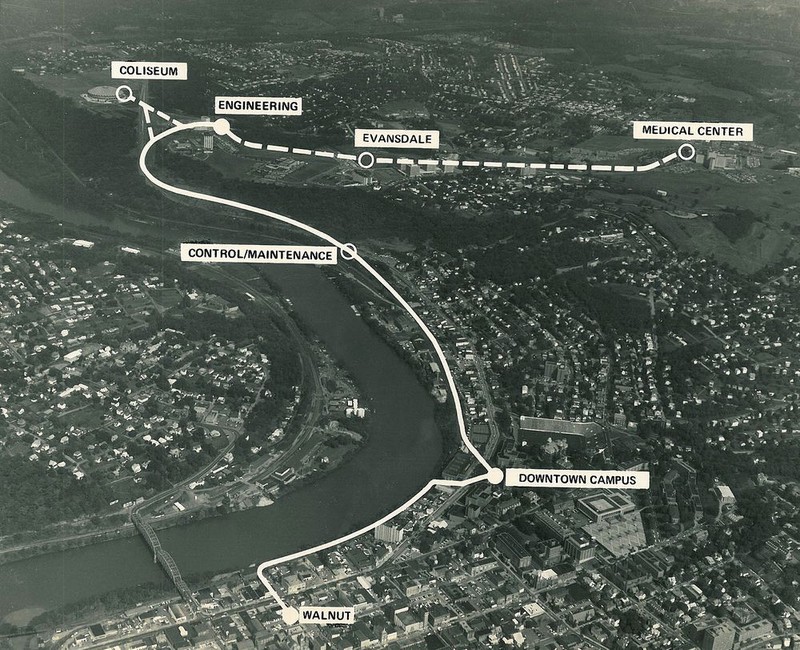
An early model of the project
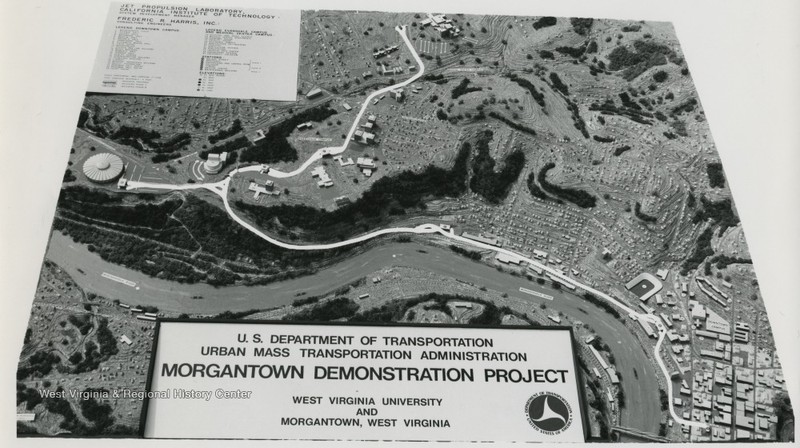
Ca. 1976 photo taken at Beechurst Station
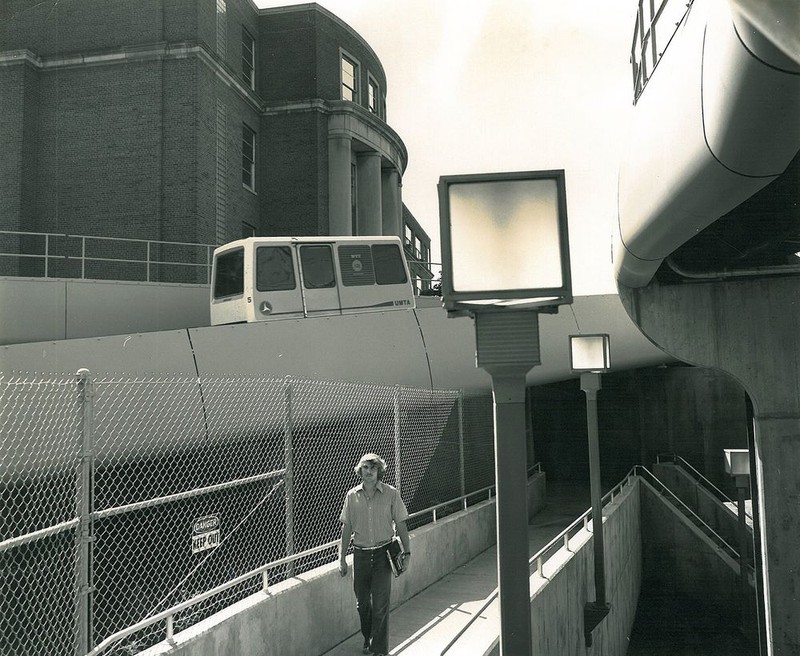
Students riding the PRT, ca. 1976
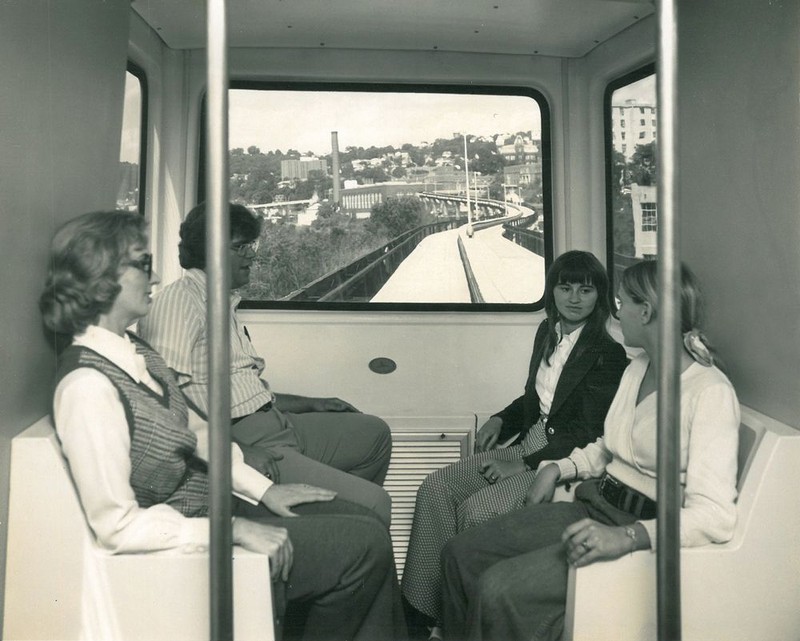
The PRT continued to operate during a major snowstorm, 1978
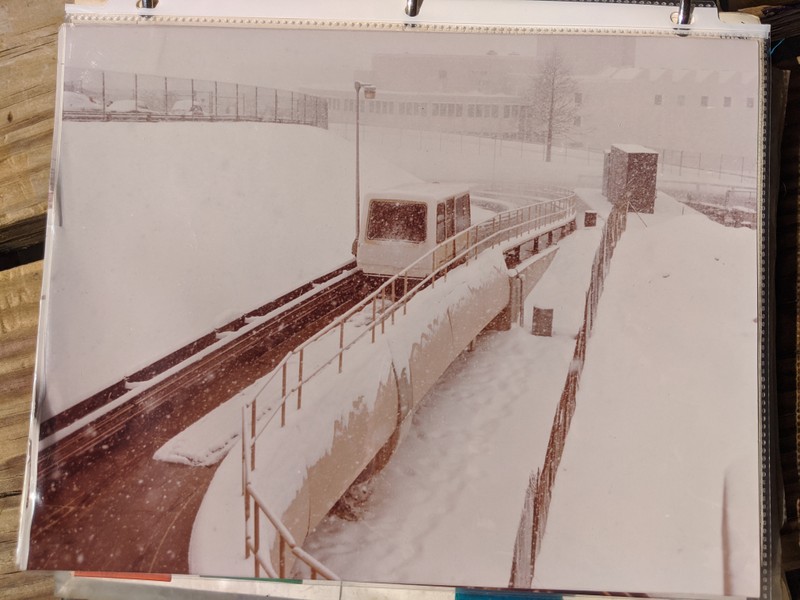
PRT operators at work in 1979. From front to back: Karl Hildebrand, Alfred Koppi, Nicholas Zara, and Danny Sinclair
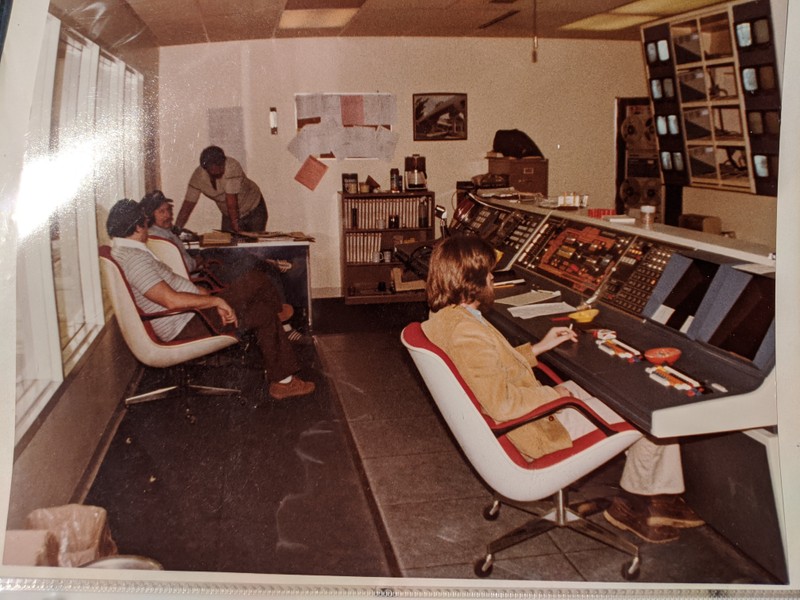
Control Panel for the PRT, visible in context above
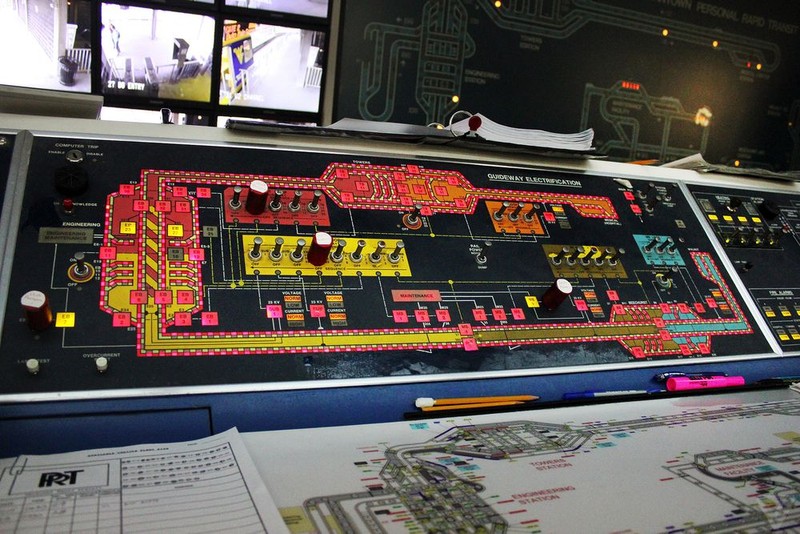
Original operator's reference guide for the PRT
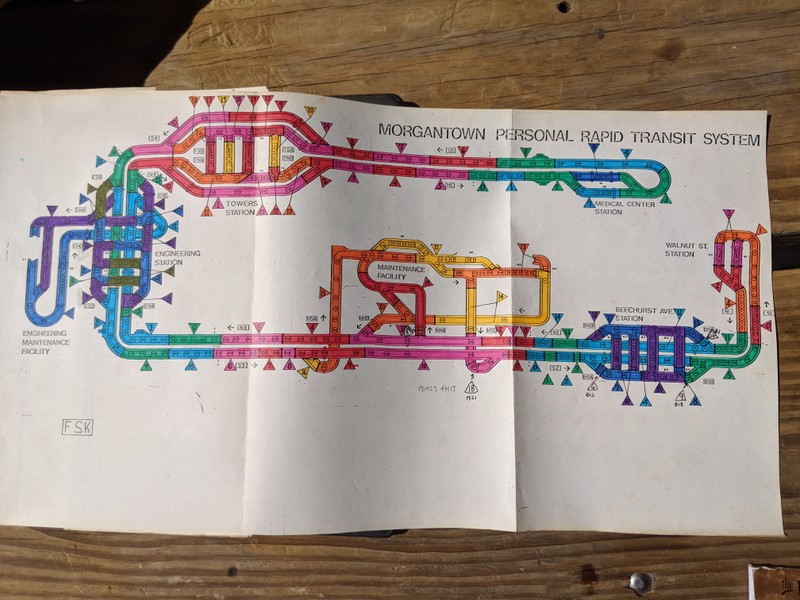
A recently painted PRT car at the Medical station
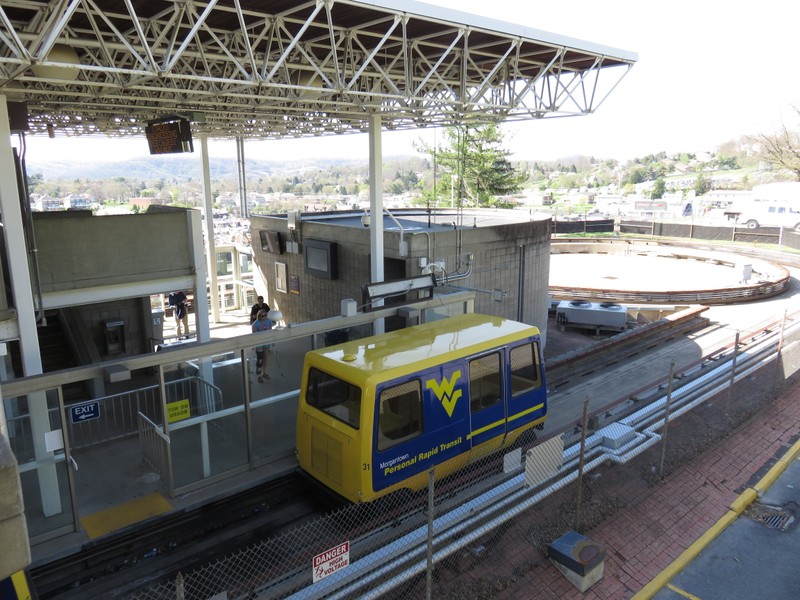
Engineering Station
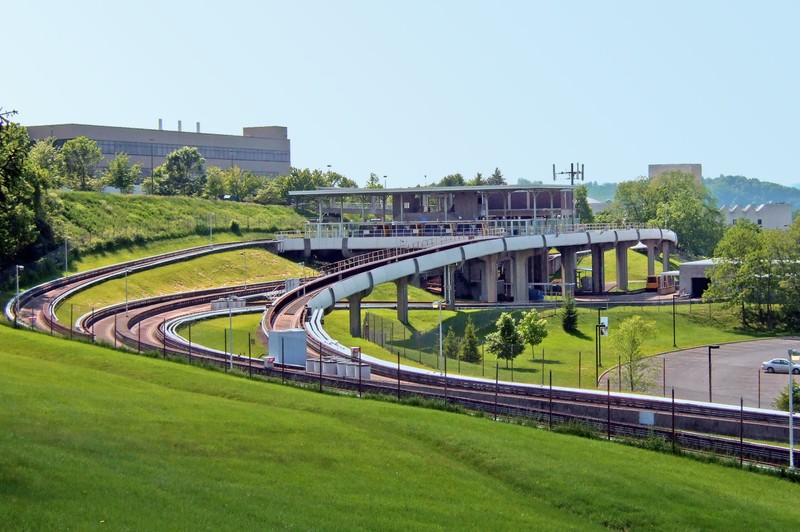
Backstory and Context
Text-to-speech Audio
In the 1960s, Morgantown found itself facing an acute traffic problem. Despite having a population of only about 50,000, the city’s disparate campuses and shortage of major thoroughfares made travel increasingly time-consuming. Morgantown’s parking and transportation issues were similar to those of a large metropolitan area, even if the population was many times smaller. Samy Elias, chair of West Virginia University’s (WVU) Industrial Engineering Department, proposed building a personal rapid transit (PRT) system in Morgantown to alleviate traffic. The Urban Mass Transportation Administration (UMTA) supplied a $50,000 grant to research the feasibility of a Morgantown PRT. This study and political pressure from Senator Robert C. Byrd led the United States Department of Transportation to support Morgantown as the site of an experimental PRT. NASA’s Jet Propulsion Lab in California was awarded the system management contract while the Boeing company in Seattle was given the fleet manufacturing contract.
Construction of the PRT began in Morgantown in 1970 but encountered challenges straight out of the gate. President Richard Nixon wanted to use the PRT as a public relations opportunity to showcase the progress his administration had made in his first term. This cut crucial time for research and development opportunities, as the system needed to be finished before the 1972 presidential election. Miraculously, a partially functional system with three stations was assembled and on October 24, 1972, Nixon’s daughter, Patricia, arrived in Morgantown to dedicate it. An accompanying demonstration of the PRT revealed its rudimentary state; several mechanical and technological malfunctions plagued the launch. The event soured relations between the UMTA, WVU, and contractors. The future of the PRT seemed uncertain at best and the UMTA even proposed simply demolishing the system so as to curtail further bad press as quickly as possible. However, construction quietly continued.
Against the odds, the PRT officially opened in 1975 at a total cost of $62 million, almost four times the initially estimated cost. The first iteration of the system featured three stations connected by 3.6 miles of track and forty-five vehicles. It cost twenty-five cents to ride, though the fare was included in tuition and compensation for WVU students, faculty, and staff. The PRT closed in 1978 for a major expansion project. Two more stations were added, which brought the total track length to 5.2 miles – and brought the total cost over $130 million. The number of vehicles also increased to seventy-one. In spite of budgetary overages, the PRT ultimately delivered on its initial promise; a transportation system that would solve Morgantown’s traffic crisis.
The PRT system consists of concrete paths fenced by guardrails. Small boxy vehicles that accommodate approximately fourteen passengers travel on the tracks using electrified rails in the guardrails for propulsion. The top speed of the vehicles is thirty miles per hour. Magnetic induction loops embedded in the concrete provide vehicle location data. One of the major contributors to the PRT’s over-budget construction is a heating system in the tracks that keeps snow and ice from accumulating. The PRT includes five stations: Walnut, which services downtown Morgantown; Beechurst, which services the Downtown Campus; Engineering, which services the Evansdale Campus; Towers, which services the Evansdale residence halls; and Medical, which services the hospital and medical campus. The maintenance and control facility are also attached to the tracks between Beechurst and Engineering. At each station, PRT users can swipe their ID cards, or pay the fifty-cent fare, and select their station. After a few minutes, a vehicle will arrive to take the passenger directly to their destination. At times of low usage, each vehicle stops at all stations.
By the 2000s, the PRT had begun to physically deteriorate. Outages and breakdowns became increasingly frequent and the system developed a reputation of unreliability. The problems with the system were exacerbated by a growing lack of technical and vendor support. Boeing withdrew completely from the project in 1980s and the PRT control room still relied on a large amount of 1970s electronics. These factors made it difficult to source new physical parts or software. A 2012 project set out to modernize the PRT and improve system uptime. Phase 1 was completed in early 2014 and replaced all vehicle control and propulsion systems. Phase 2 involved updating the Automatic Train Control System and improving vehicle communication. Phase 3 is scheduled to begin in late 2020 and will involve the replacement of the vehicles and repairs to the track.
The PRT continues to operate and transports approximately 15,000 people each day. It has become a WVU icon, particularly after the cars were painted bright gold and blue and emblazoned with the school’s logo in the 2000s. Despite its shortcomings, the continued existence of the PRT is remarkable. At just $2.01 of operating cost per ride, the system is the third cheapest fixed guideway in the United States. Boeing initially predicted that the PRT would be responsible for one death every twelve years. In contradiction to this, a spotless safety record is marred only by a minor vehicle crash in 2016. However, the PRT never achieved the status of emblematic prototype like its progenitors had hoped. At the heart of the lack of purchase seems to be uncertainty about the cost effectiveness and consumer appeal of PRTs. Regardless, for over forty-five years, the Morgantown PRT has served the WVU community and there are no plans to discontinue the system.
Karl Hildebrand offers some personal recollections from his time as a PRT operator and supervisor in this entry's attached audio clip.
Cite This Entry
MacKay, Iain. "Personal Rapid Transit (PRT)." Clio: Your Guide to History. September 22, 2020. Accessed April 8, 2025. https://theclio.com/entry/113238
Sources
Anderson, J. Edward. Some Lessons from the History of Personal Rapid Transit (PRT), Washington State University. August 4th 2004. Accessed August 25th 2020. http://faculty.washington.edu/jbs/itrans/history.htm.
Gannett Fleming, Inc. PRT Facilities Master Plan, WVU PRT. June 1st 2010. Accessed August 25th 2020. https://prt.wvu.edu/files/d/7b574508-a4ab-411e-8f7b-5aa29fed3d7d/wvu-prt-master-plan-final.pdf.
Hildebrand, Karl. Personal conversation with author. September 21, 2020.
Personal Rapid Transit System, Boeing. Accessed August 25th 2020. http://www.boeing.com/history/products/personal-rapid-transit-system.page.
Personal Rapid Transit, Personal Rapid Transit. Accessed August 25th 2020. https://prt.wvu.edu/.
Raney, Steve and Stanley E. Young. Morgantown People Mover - Updated Description, Transportation Research Board. November 15th 2004. Accessed August 25th 2020. http://www.cities21.org/morgantown_TRB_111504.pdf.
Robertson, Adi. The Road Not Taken, The Verge. Accessed August 25th 2020. https://www.theverge.com/2016/2/24/11094524/prt-transit-history-self-driving-cars-alden-starrcar-tomorrowland-1960s.
WVU Department of Parking and Transportation
West Virginia & Regional History Center
WVU Department of Parking and Transportation
WVU Department of Parking and Transportation
Karl Hildebrand
Karl Hildebrand
James Bareham
Karl Hildebrand
WikiMedia
WikiMedia

